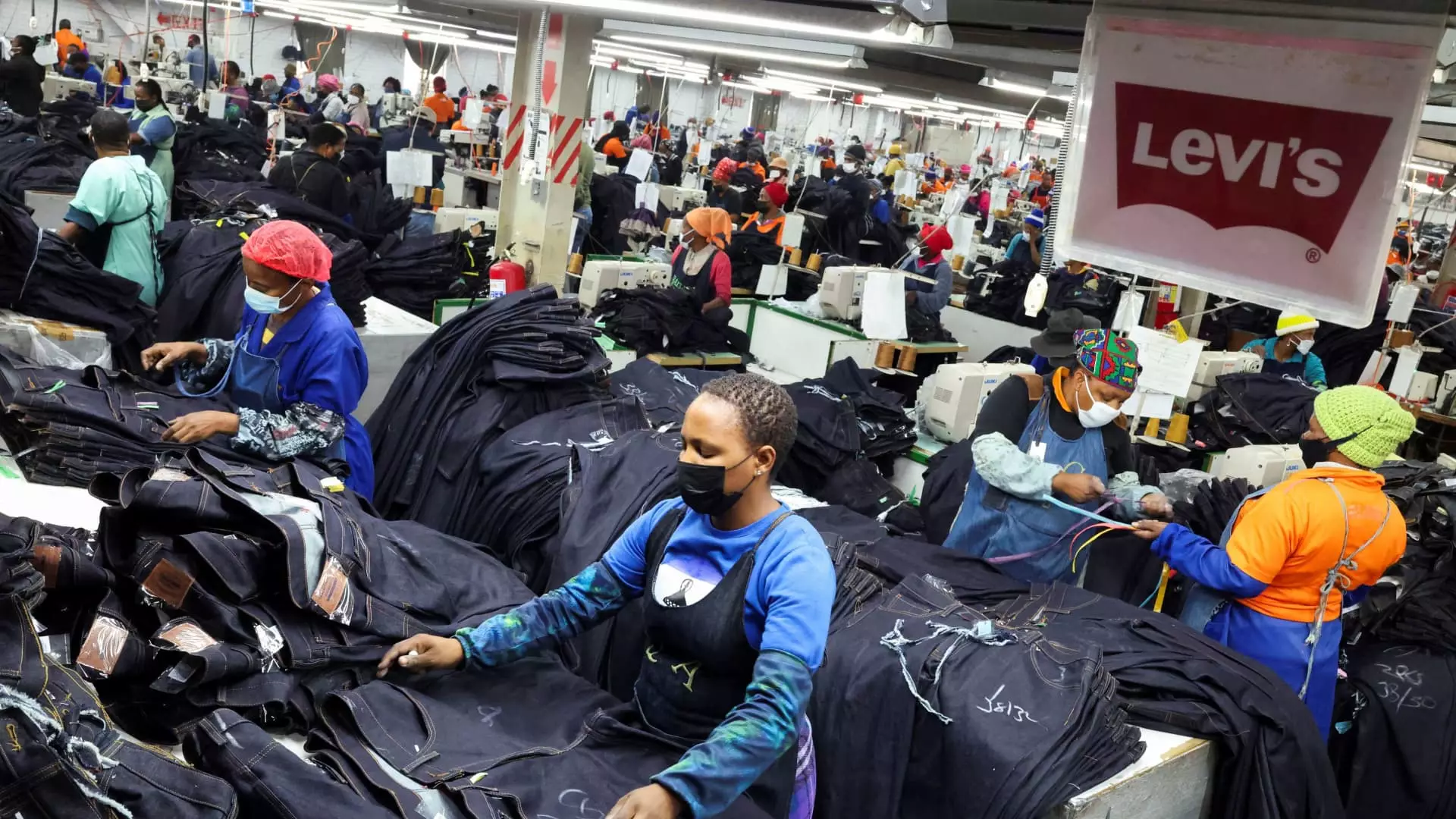In a world increasingly defined by geopolitical friction and unpredictable trade policies, Levi Strauss & Co. stands as a compelling case study of resilience and strategic adaptation. Despite facing external pressures—particularly the threat of tariffs and shifts in international trade dynamics—the company has managed to raise its guidance and even beat earnings expectations. This suggests that, beneath the surface of market volatility, a well-managed brand with a clear vision can still chart a course toward growth. However, such optimism comes with caveats, particularly given the volatile nature of trade policies driven by current political agendas, notably those from the Trump administration.
Levi’s reliance on global manufacturing—primarily in Southeast Asia—puts it squarely in the crosshairs of tariff policies. While they do not publicize specific manufacturing hubs, it’s well-known that a significant share of their supply chain is located in countries like Pakistan, Bangladesh, and Indonesia. These regions now face undue political pressure, with threats from the U.S. government to impose hefty tariffs, sometimes exceeding 30%. Such measures aim at punishing trade partners, but in reality, they risk destabilizing supply chains and escalating costs, especially for companies that depend on these regions for their production.
Guided by Optimism, Yet Eyeing Risks
Levi’s decision to raise its full-year earnings forecast to between $1.25 and $1.30 per share—beating analyst estimates—signals a firm belief in the company’s capacity to withstand turbulent trade waters. This confidence appears rooted in the company’s strong brand positioning and operational efficiencies developed under recent leadership efforts. For example, Levi’s recent move to streamline underperforming segments, including its plan to sell off the Dockers brand, underscores a strategic focus on core strengths—namely, premium denim and direct-to-consumer channels.
However, the forecast hinges on assumptions that tariffs remain at current levels—30% on China and 10% on other regions—or at least do not escalate further. In the complex theater of trade negotiations, where tariffs are as much a geopolitical tool as economic policy, such assumptions are precarious. The unpredictability of President Trump’s trade negotiations—shifting from threats to potential agreements—means that Levi’s outlook, however optimistic, remains susceptible to sudden change. A rise in tariffs or new trade restrictions could erode profit margins, inflate costs, and dampen sales growth in unforeseen ways.
The Power of Brand and Strategic Innovation
What sets Levi’s apart amid this chaos is its deliberate focus on brand strength and operational agility. CEO Michelle Gass has successfully pivoted the company toward a direct-to-consumer model, recognizing that margins on digital and owned retail channels far surpass wholesale arrangements. Their shift to emphasize online sales, which now represent over half of their business, is a testament to modern retail resilience. By scaling digital operations, Levi’s has turned an often-costly channel into a profitable one, signaling a shift that could, in the long term, insulate the company from external shocks and commoditization.
The company’s marketing efforts—highlighted by strategic collaborations like the Beyonce partnership—underline their commitment to staying relevant with diverse consumer segments, especially women. Such initiatives are vital in an era where consumer loyalty is increasingly driven by experiential and emotional engagement, not just product quality. Levi’s effort to expand beyond denim into broader apparel markets reflects a flexible and forward-looking strategy. This diversification reduces dependence on one product category and opens new revenue streams, crucial when face-to-face retail might be restricted or profitability challenged.
Market Confidence Amidst Economic Uncertainty
Levi’s earnings beat expectations for the second quarter, largely buoyed by robust consumer demand and operational efficiencies. The company’s gross margin has hit a record 62.6%, driven by fewer markdowns and better cost management—an impressive feat in an industry notorious for razor-thin margins. Such financial health indicates that, despite external threats, Levi’s has built up enough resilience to weather the rough climate.
More telling is the company’s optimistic tone about the consumer’s sustainability. In a climate of economic uncertainty—be it trade-related or domestic—Levi’s leadership maintains that consumers are resilient. This stance, while optimistic, might overlook the fragile economic environment that could swiftly change with further escalation of trade disputes or worsening economic indicators. Yet, Levi’s conviction suggests a belief that their brand core and strategic focus on quality and relevance will carry them through turbulent times.
The Politics of Trade and the Illusion of Control
From a center-right entrepreneurial perspective, Levi’s approach embodies the necessity of adaptive strategy in unpredictable political terrains. While the company hopes to absorb tariffs and keep their guidance intact, the reality remains that external policies are largely beyond their control. The administration’s aggressive tariff threats not only threaten immediate costs but also create a climate of uncertainty that can erode consumer confidence and disrupt supply chains.
The boldness of Levi’s response—raising guidance, strategically raising prices, and increasing direct sales—is commendable, but it also risks overestimating their resilience. The company’s reliance on consumer demand remaining stable resembles a gamble that could backfire if trade tensions escalate or if economic sentiment takes a downturn. Nonetheless, their proactive measures reflect a pragmatic belief that innovation and brand strength are the best defenses against external shocks, rather than passive reliance on favorable policy outcomes.
In essence, Levi’s strategic posture reflects a nuanced understanding: Navigate the storm with optimism rooted in operational discipline, but remain vigilant against policy uncertainties that could swiftly tip the scales. It’s an approach centered on resilience, but not naïvete, recognizing that in the political economy, control is often illusionary.

